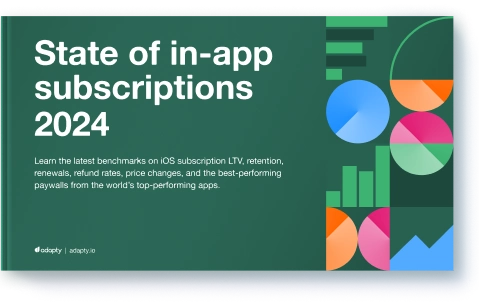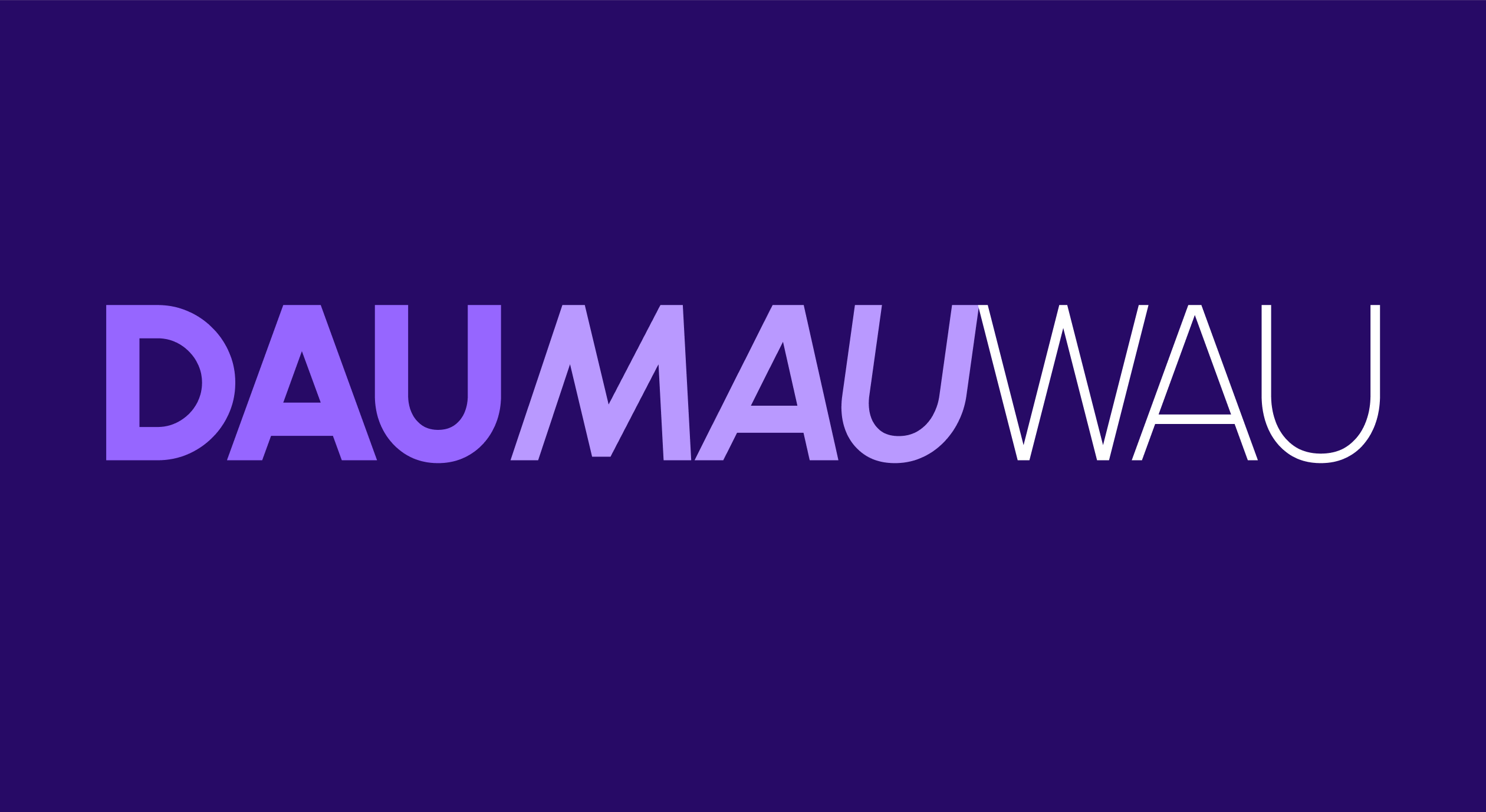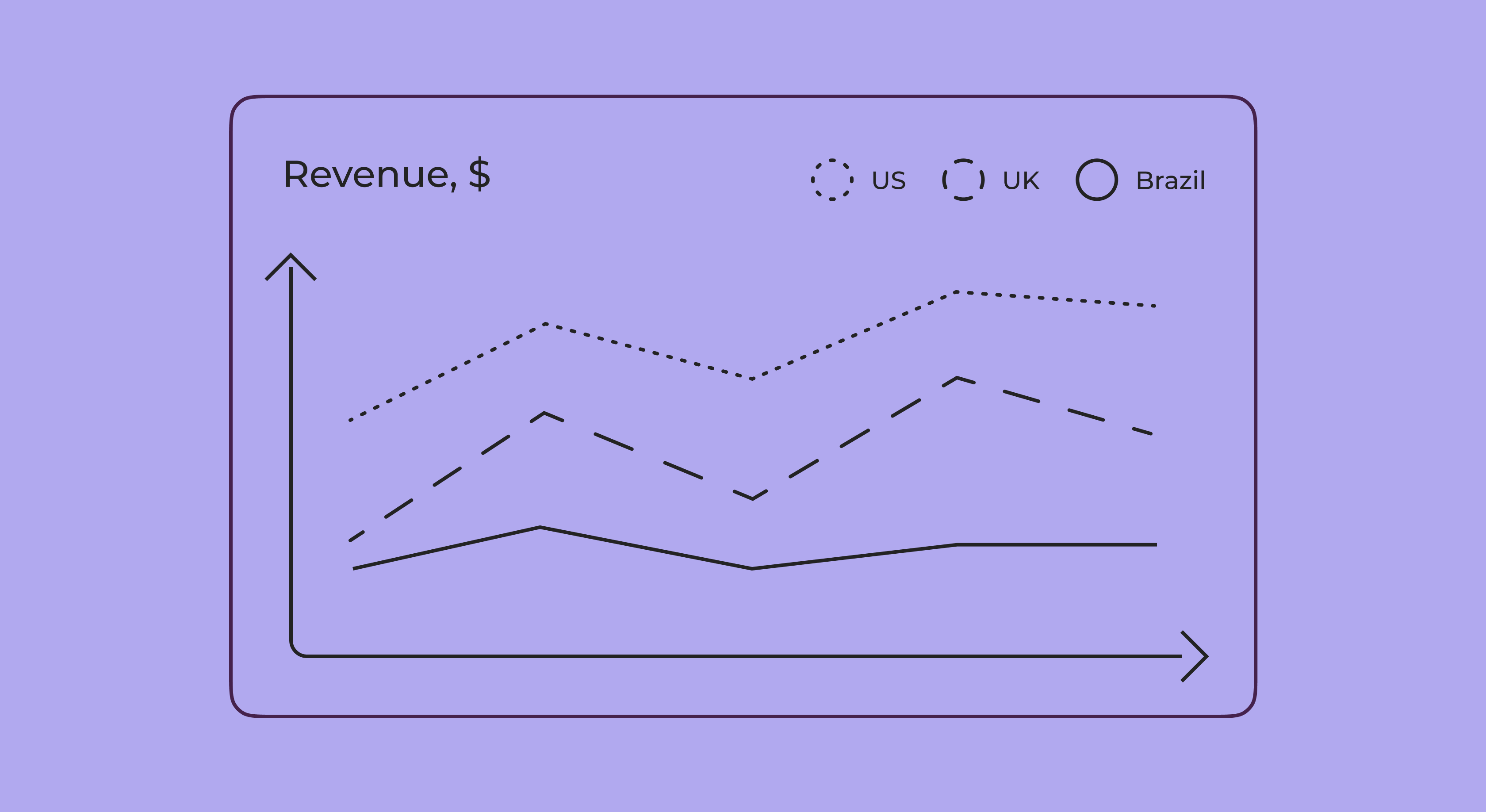Why do you need to localize your mobile app?

October 16, 2023
18 min read

Now more than ever, your phone is a one-stop shop for anything you can possibly need. It’s not just a device to stay connected with people or make phone calls. It’s a necessary way to stay connected to services and wants too.
Food delivery? You got it! Bored on a weekend? Download a video game!
In fact, in 2022 alone, a total of 255 billion mobile apps were downloaded and used. And with this expansive range of downloads, we’re seeing a rising trend. People want apps in their native languages.
The way I see it, this is an ideal opportunity for app developers to build a competitive edge and enter international markets via mobile app localization.
Not sure what I’m onto yet? Keep reading!
What is app localization?
App localization is the process of adapting a mobile to a specific target market by changing all aspects of its use and visuals to appeal to a specific language, culture, and target market. But before you think you can slap some Google-translate on your app and call it a day, it’s not going to work.
App localization is more than just translating text.
It includes making adjustments to various elements to ensure that the app feels native and relevant to the users in the target locale. For instance, you’ll have to ensure your app promotion is focused on localized marketing strategies and that your user interface layout supports the target demographic.
Some of the core elements of app localization include:
- Text translation
- Date and time formats
- Audio dubbing
- Graphic redesigning
- User interface layout
- Keyboard and input method preferences
- Local regulations and legal requirements
- Localized marketing and promotions
- App Store Optimization (ASO)
Benefits of localizing mobile apps
Mobile app localization isn’t a random wild goose chase app developers are onto. But it is being chased because of all the benefits it can bring to your app on a silver platter. Here are the 6 benefits of localizing mobile apps:
Access to Global Markets
By localizing an app, it becomes accessible to users around the world who prefer content in their native language. This expanded reach opens up opportunities in diverse markets and demographic segments.
In other words, you’ve opened up your app to a whole new world of internet users who can skyrocket your app downloads and app store listings!
Think Airbnb which started within its founder’s apartment and is now localized to serve around 220 countries across the globe with a net value of $75 billion!
Improved User Experience
A localized app feels intuitive and user-friendly, as users can navigate through menus, instructions, and content in their preferred language. This leads to a smoother and more satisfying experience, enhancing your app’s engagement and retention rates!
Higher Conversion Rates
Localization increases the likelihood of users converting from free to paid users. When users find value in an app that is tailored to their language and culture, they’re more inclined to invest in premium features or make in-app purchases.
Competitive Advantage
In markets where competitors have not yet localized their apps, being the first to offer a tailored experience can provide a significant competitive edge. And when you’re staring into the eyes of a global audience, a competitive edge can take you to the stars and beyond!
Word-of-Mouth Marketing
Satisfied users are more likely to recommend a localized app to their friends and family, driving organic growth through positive word-of-mouth marketing. As your app users grow, so do your app downloads and your opportunity to monetize your app content!
And that brings us to our last benefit…
Maximized Revenue Potential
Targeting multiple regions with tailored content can lead to substantial revenue growth. Users are more willing to pay for an app that feels personalized and relevant to their local context!
Not only that but since you already grow your user base with more countries, you can expect to make more sales quicker than before.
Does mobile app localization really make an impact?
Mobile app localization is one aspect of app development that is highly documented and studied. Given that last year, 255 billion apps were downloaded, we’re seeing great potential for users and their diversifying needs with the range of options available.
But it’s obvious to understand that 255 billion downloads didn’t come from English countries alone. In fact, the three languages that make up 55% of the app download localities are:
- English,
- Chinese, and
- Spanish!
So it’s just a matter of time before app localization becomes standard procedure instead of being a feature that gives your app a competitive edge. A study from Distomo revealed that mobile app localizations resulted in a 128% increase in downloads per country as well as a 26% revenue gain for each country!
Another case study showed that with a winning localization strategy, Coin Splash ended up with a 101% increase in global downloads and a 67% overall increase in local countries.
App localization vs. App internationalization
A lot of app developers often confuse app localization with app internationalization. And before you make the same mistake, let’s talk about it.
Repeat after me: app localization is NOT app internationalization.
Localization is the process of customizing an app to suit the language, cultural norms, and preferences of specific regional markets. The goal of localization is to create a seamless and engaging user experience for different audiences, enhancing user engagement and potential revenue growth.
On the other hand, app internationalization is the preparatory phase that focuses on making the app’s core architecture and codebase adaptable for these localizations. From designing the app for easy integration to developing a flexible infrastructure for future efforts, app internationalization is the supporting hand that makes app localization happen.
Here’s a simple breakdown of their differences so you never confuse one with the other:
| Aspect | Localization | Internationalization |
|---|---|---|
| Focus | Cultural and regional adaptation | Core preparation for future adaptations |
| Purpose | Tailor app for specific markets | Make app adaptable for multiple markets |
| Elements Modified | Text, images, symbols, design, content | App architecture, code, structure |
| Goal | Enhance user experience and engagement | Adapts existing apps for a specific market |
| Scope | Specific language and cultural context | App’s foundational flexibility |
| Implementation | Improved engagement, revenue, and brand image | Design an app to accommodate localizations |
| Benefits | Improved engagement, revenue, brand image | Efficiency, reduced development time |
2024 subscription benchmarks and insights
Get your free copy of our latest subscription report to stay ahead in 2024.
Types of mobile app localization
App localization isn’t a copy-paste process and there’s certainly not one way to do it. So if you’re hooked on the idea of starting your mobile app localization process, you need to know the two ways you can get the job done successfully.
Full app localization
Fully localizing an app means a complete adaptation for specific regions or cultures. This includes translating text accurately, considering idiomatic expressions, and adjusting date, time, and numeric formats.
Visual elements like images, icons, and colors are also tailored to align with local preferences, while UI/UX design ensures intuitive navigation for different languages.
If your app has audio or video content, dubbing, and subtitles are some more elements within app localization that you’ll need to focus on. Furthermore, since you’re venturing into a new country with different laws and regulations, your app policies might need to be altered too.
Minimum viable localization (MVL)
Minimum Viable Localization (MVL) is a strategic approach that offers a streamlined version of full app localization, targeting essential elements for rapid market entry.
MVL involves translating key content, like menus and core instructions, into the target language, enabling basic usability. While it may omit certain cultural adaptations, MVL facilitates a quicker launch, allowing businesses to test the waters, gather user feedback, and assess market potential at a quicker pace.
As a cost-effective solution, MVL provides an initial foothold, paving the way for more comprehensive localization efforts as the app gains traction and justifies deeper investment.
How to localize your mobile app step-by-step
Proven by various app analytics, localized apps earn more, get downloaded more, and are more successful than apps that aren’t localized.
I’ve broken down the mobile app localization process into a simple 5-step one so you can jump over the cultural differences and unite a global audience with a global app!
- Prepare your app for localization
Before anything else, you begin planning for your localization. And the perfect way to start is by asking yourself some strategy questions:
- What markets are you localizing for?
- What cultural differences can you notice about your choice of market?
- Are you going global immediately or starting with an in-region strategy?
- What’s your localization budget?
- How are you collecting resources and raw data?
- Who will work on the localization?
- What language service providers are you using for translations?
- How long do you need to launch your localized mobile app?
- What metrics are you tracking?
- How will you test the app?
- How will you know your app is successful?
These questions can get you a skeleton on paper to fully flesh out via your actions. With these answers, you can do effective market research and understand if your app’s coding infrastructure is stable enough for the scale of localization you’re aiming for.
- Accommodating layout and design
Address design considerations to cater to diverse languages and cultures. For languages that read from right to left (e.g., Arabic), ensure that the app’s layout remains coherent and the text remains legible.
What’s more, is that you’ll have to respect cultural color preferences by adapting the app’s color palette to align with the target audience’s visual preferences and cultural significance. A thoughtfully designed user interface ensures that the app remains visually appealing and user-friendly across different regions.
- App copy translation
App copy translation is a cornerstone of successful localization.
Accurate and culturally sensitive translations are essential to convey the intended message and maintain a high-quality user experience.
Consider using professional translation services or tools that offer context-aware translations, capturing the nuances and idiomatic expressions of the target language. Effective translation maintains the app’s tone, voice, and clarity, ensuring users in different regions can engage with the content seamlessly.
- App image localization
If your visuals, especially images, are tone-deaf to the demographic you’re aiming for, your app is going to drown faster than you can get a lifeboat out.
Replace or modify images that may contain text or elements specific to another culture, ensuring that visuals resonate with the target audience’s cultural context. Thoughtful image localization contributes to a more immersive and meaningful user experience.
- Testing and quality assurance (QA)
Testing and QA are pivotal steps to validate the effectiveness of your localized app. Thoroughly test functionality, layout, and linguistic accuracy to identify any issues that might have arisen during the localization process.
Engage beta testers from the target markets to provide real-world insights and feedback. You can do this by hiring beta testers online or simply releasing your app to a segmented focus group and triggering a survey/feedback form after some time of use.
Beta testing ensures that the app functions smoothly, content is correctly adapted, and the user experience aligns with cultural expectations. This final stage guarantees a polished and seamless localized app that meets the needs and preferences of diverse users.
And with that, voila! You have a localized app on your hands. It’s time to talk about…
The challenges of app localization
Mobile app localization is all rainbows and butterflies when you’re reading about it. But in reality, it is a long and complicated process that has many risks along the line.
Amongst all these risks, here are the top 5 challenges of app localization you can face before your app launch for new users:
Linguistic challenges and translation accuracy
Navigating linguistic intricacies poses a significant hurdle. Translating idioms, wordplay, and cultural references requires finesse to preserve intended meanings accurately. A poorly executed translation can lead to confusion, flat humor, or even offense, all of which can reduce your retention and engagement rates.
Similarly, finding a certified and reliable translator to ensure nothing can be misinterpreted is a tough challenge for most app localization developers.
Cultural faux pas and sensitivity
Cultural missteps are a real concern. Inappropriate imagery, symbols, or content can inadvertently offend users. This lack of cultural awareness can lead to insensitivity, hindering user adoption and causing reputational damage. So you must always understand local customs and sensitive topics.
Think this is a tad bit too dramatic? How about realizing that while the entire world finds no problem in sending the okay emoji, Brazil finds the 👌 gesture to be offensive and insulting?
Ignoring local regulations and laws
Privacy laws, data protection, and content restrictions vary globally. So disregarding local regulations and legal requirements can result in severe consequences. From legal actions, fines, or even app removal, ignoring the local law can jeopardize brand credibility and financial stability.
Technical layout problems
When you’re focused on your technical layout for localization, Languages vary in length, which can disrupt UI layout and design. Script direction (right-to-left or left-to-right) poses formatting challenges. Ensuring a harmonious design across languages requires meticulous planning to avoid text truncation, overlapping, or distorted visuals.
Compatibility issues
Some languages demand specific fonts, scripts, or characters that might not be supported by all devices. Ensuring the app functions seamlessly across various platforms while accommodating diverse language features, can be frustrating if you’re not prepared for it since the beginning!
Top Tips for mobile app localization
Before we finally get to the end of this blog, I want to bring to you the top 6 tips for your mobile app localization process.
Collaborate with native speakers and local experts
Engage with native speakers and cultural experts to gain insights into language nuances, idiomatic expressions, and cultural sensitivities. Their input ensures accurate translations and culturally relevant content, fostering user trust and engagement.
Leverage localization tools
Use localization tools to streamline the process, but review and validate translations for accuracy and cultural fit. Automated tools should be aids, not substitutes, for human expertise.
Optimize user interface (UI) for flexibility
Design a flexible UI that accommodates text expansion or contraction. Different languages have varying text lengths; adapting UI components ensures proper layout and maintains visual appeal.
Test extensively with native beta testers in your target markets
Conduct thorough beta testing in the target markets with real users. Their feedback helps identify localization issues, user experience concerns, and any cultural missteps that may have been overlooked.
Encourage user feedback from localized versions. Implement improvements based on user suggestions and experiences, which ultimately shows your dedication to meeting diverse user needs.
Adapt visual elements for cultural relevance
Modify images, icons, and symbols to align with local culture and traditions. Visual cues play a vital role in resonating with users and can play a critical role in the success of your app in global markets like the iOS app store and Google Play.
Stay on top of local laws
Research and adhere to local regulations, data protection laws, and content restrictions. This ensures legal compliance, preventing potential legal issues that could impact the app’s reputation and availability.
Better yet, hire a legal expert from your target market to elaborately explain the local regulations and laws you’ll need to keep in mind during your app localization.
Final Thoughts
Mobile app localization is an opportunity under our noses to take our apps into global target markets with other languages. It creates a system where your app can compete for the global market, enjoy great app launch successes, and make you a ton of money.
If done right, that is.
So in this blog, I hope we’ve got you set up with all the reasons you should be taking advantage of this and a detailed guide on how to get started!
Recommended posts






